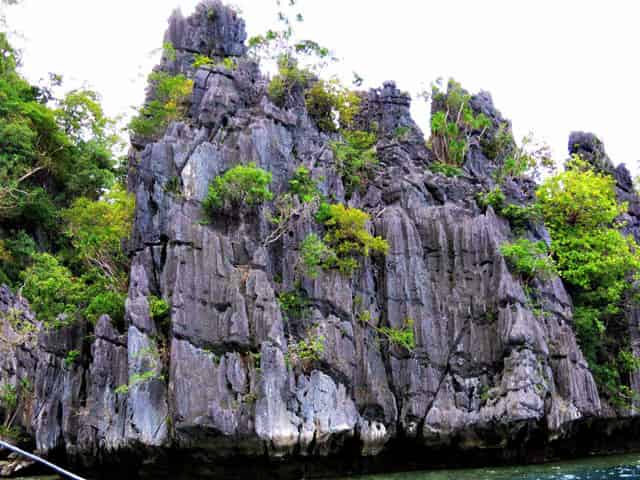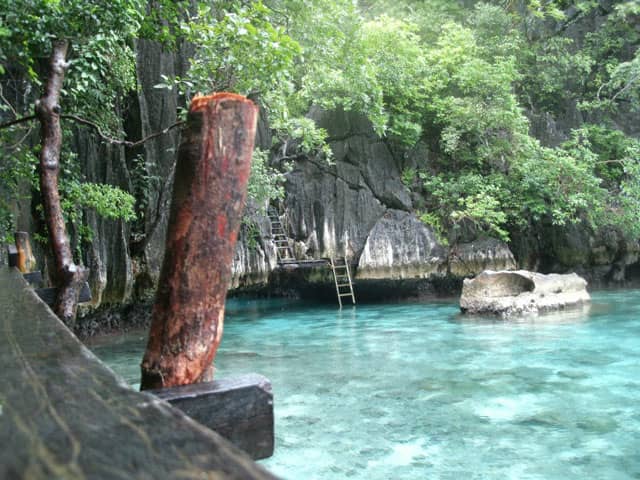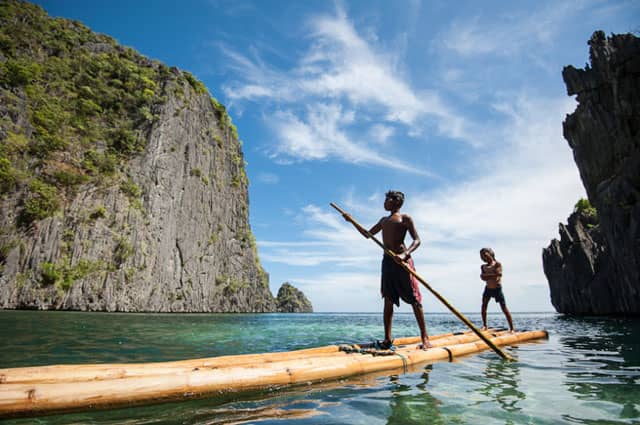5 Fascinating Facts about Coron, Palawan
Here are some fascinating facts about Coron in Palawan, from how this island was formed to its environmental awards to its keepers’ greatest legacy.

Fact #1. Coron limestones were formed 260 million years ago as a coral reef along the length of Southeast Asia and was part of the China Continental Crust. It was later drafted to its present location north of Palawan by tectonic movements.
They were uplifted by tectonism some 30 million years ago and then extensively eroded by waves and monsoon rains to create its present unique “karst” topography. These limestone crops rise dramatically as cathedral-like formations more 400 meters above sea level. [Source: UNOCAL company calendar]

Fact #2. Lake Kayangan and Lake Barracuda are the only two lakes in Coron open to tourists. Both had been awarded the cleanest lakes in the Philippines. How pristine the sacred lakes (Panyaan) in the island, we can only imagine.
The Calamian Tagbanuas, the indigenous caretakers of Calamianes Islands, believe that a Panyaan is sacred for the spirits dwelling in it. This is usually a big rock or coral reef formation that is separated from its main structure and in relatively deep water. They believe that a kunlalabyut or giant octopus lives in this area.
Fact #3. The World Conservation Organization recognizes Coron Island as a community conserved area because its strict conservation rules and forbidden/sacred lakes and beaches are considered equivalent to its management category: Ia, Strict Nature Reserve and Category V, Protected landscape/seascape.
A community conserved area is defined as natural and modified ecosystems, including significant biodiversity, ecological services, and cultural values, voluntarily conserved by indigenous peoples and local and mobile communities through customary laws or other effective means [Source:Borrini-Feyerabend, et.al, 2004].




Fact #4. The Calamian Tagbanua serves as an inspiration to other indigenous communities here in the Philippines and outside the country for securing the autonomous right for their ancestral domain including water areas.

Fact #5. “The islanders were impressively clean, their houses spaciously set in courtyards, and there was no alcoholism…There was poverty, but there was no squalor.” This, according to Victor Paul Borg of Geographical Magazine.
These photos below taken by photographer Jacob Maentz during his visit to the island affirms that it remains true up to now, at least in areas of the Tagbanuas because the waters close to the mainland are already polluted.







Fact #1. Coron limestones were formed 260 million years ago as a coral reef along the length of Southeast Asia and was part of the China Continental Crust. It was later drafted to its present location north of Palawan by tectonic movements.
They were uplifted by tectonism some 30 million years ago and then extensively eroded by waves and monsoon rains to create its present unique “karst” topography. These limestone crops rise dramatically as cathedral-like formations more 400 meters above sea level. [Source: UNOCAL company calendar]

Kayangan Lake. Photo courtesy of Carol Caudilla
Fact #2. Lake Kayangan and Lake Barracuda are the only two lakes in Coron open to tourists. Both had been awarded the cleanest lakes in the Philippines. How pristine the sacred lakes (Panyaan) in the island, we can only imagine.
The Calamian Tagbanuas, the indigenous caretakers of Calamianes Islands, believe that a Panyaan is sacred for the spirits dwelling in it. This is usually a big rock or coral reef formation that is separated from its main structure and in relatively deep water. They believe that a kunlalabyut or giant octopus lives in this area.
Fact #3. The World Conservation Organization recognizes Coron Island as a community conserved area because its strict conservation rules and forbidden/sacred lakes and beaches are considered equivalent to its management category: Ia, Strict Nature Reserve and Category V, Protected landscape/seascape.
A community conserved area is defined as natural and modified ecosystems, including significant biodiversity, ecological services, and cultural values, voluntarily conserved by indigenous peoples and local and mobile communities through customary laws or other effective means [Source:Borrini-Feyerabend, et.al, 2004].




Fact #4. The Calamian Tagbanua serves as an inspiration to other indigenous communities here in the Philippines and outside the country for securing the autonomous right for their ancestral domain including water areas.

Calamianes Island
Fact #5. “The islanders were impressively clean, their houses spaciously set in courtyards, and there was no alcoholism…There was poverty, but there was no squalor.” This, according to Victor Paul Borg of Geographical Magazine.
These photos below taken by photographer Jacob Maentz during his visit to the island affirms that it remains true up to now, at least in areas of the Tagbanuas because the waters close to the mainland are already polluted.






The rest of the photos were provided by the travel buddies.